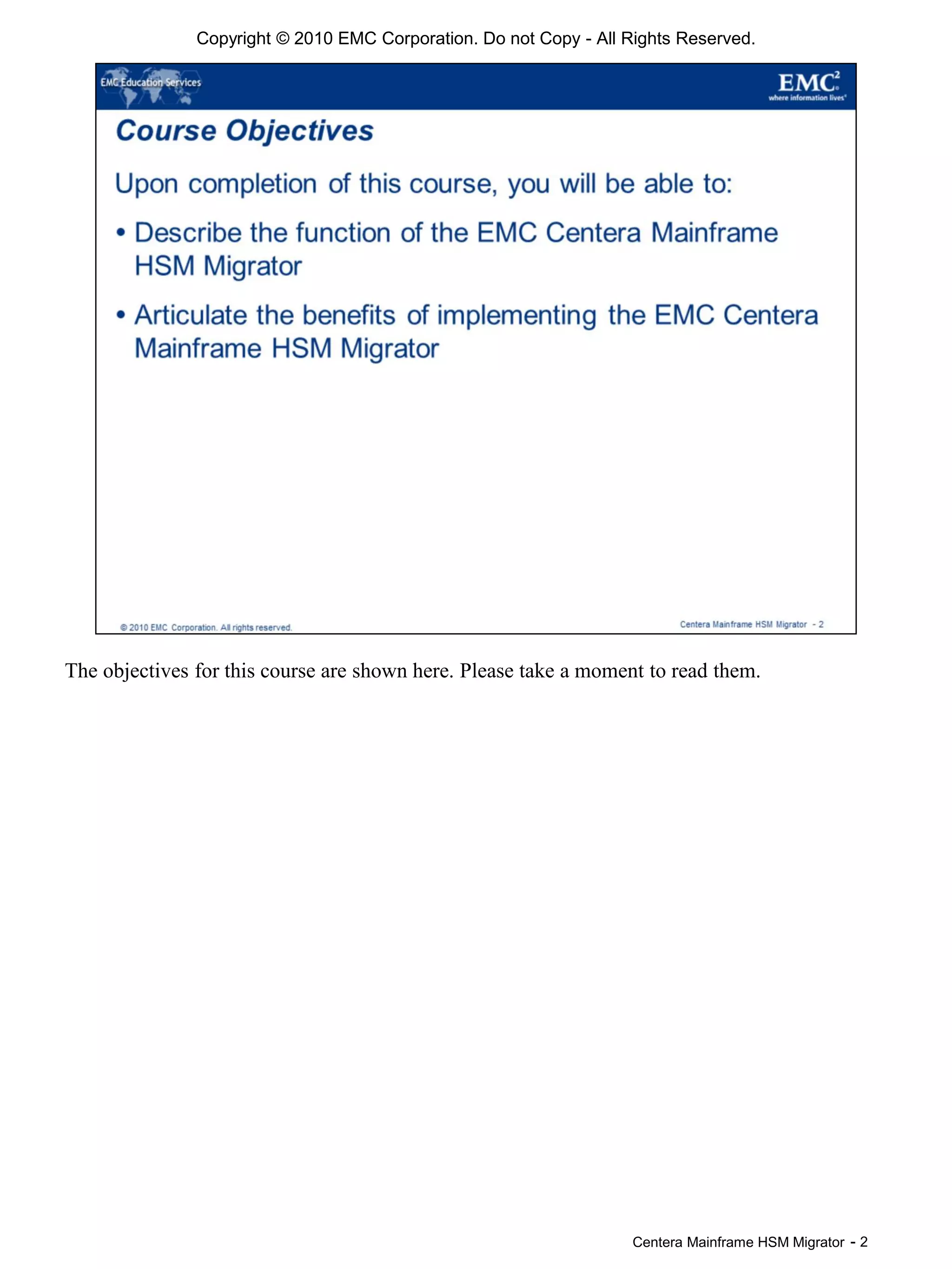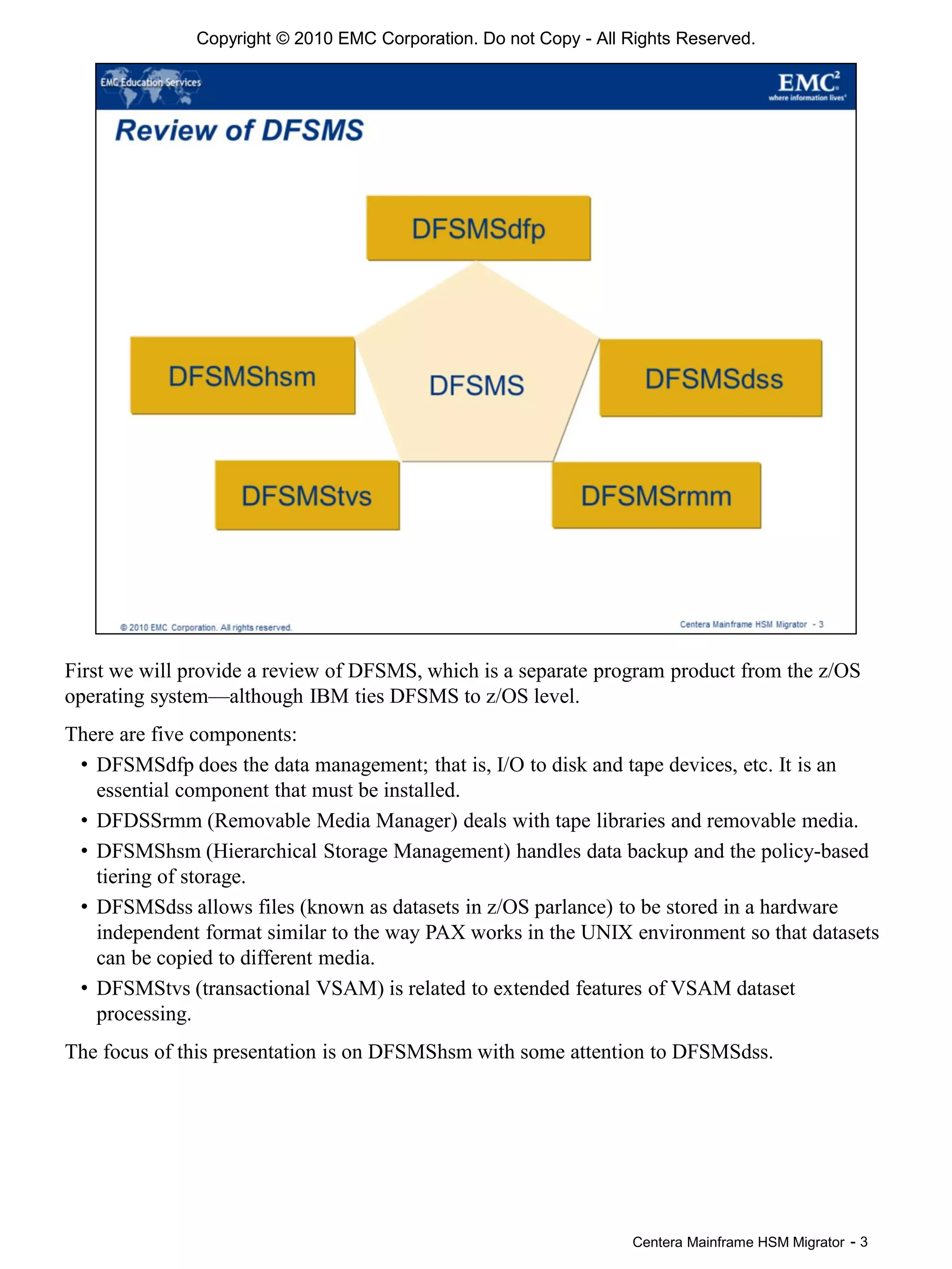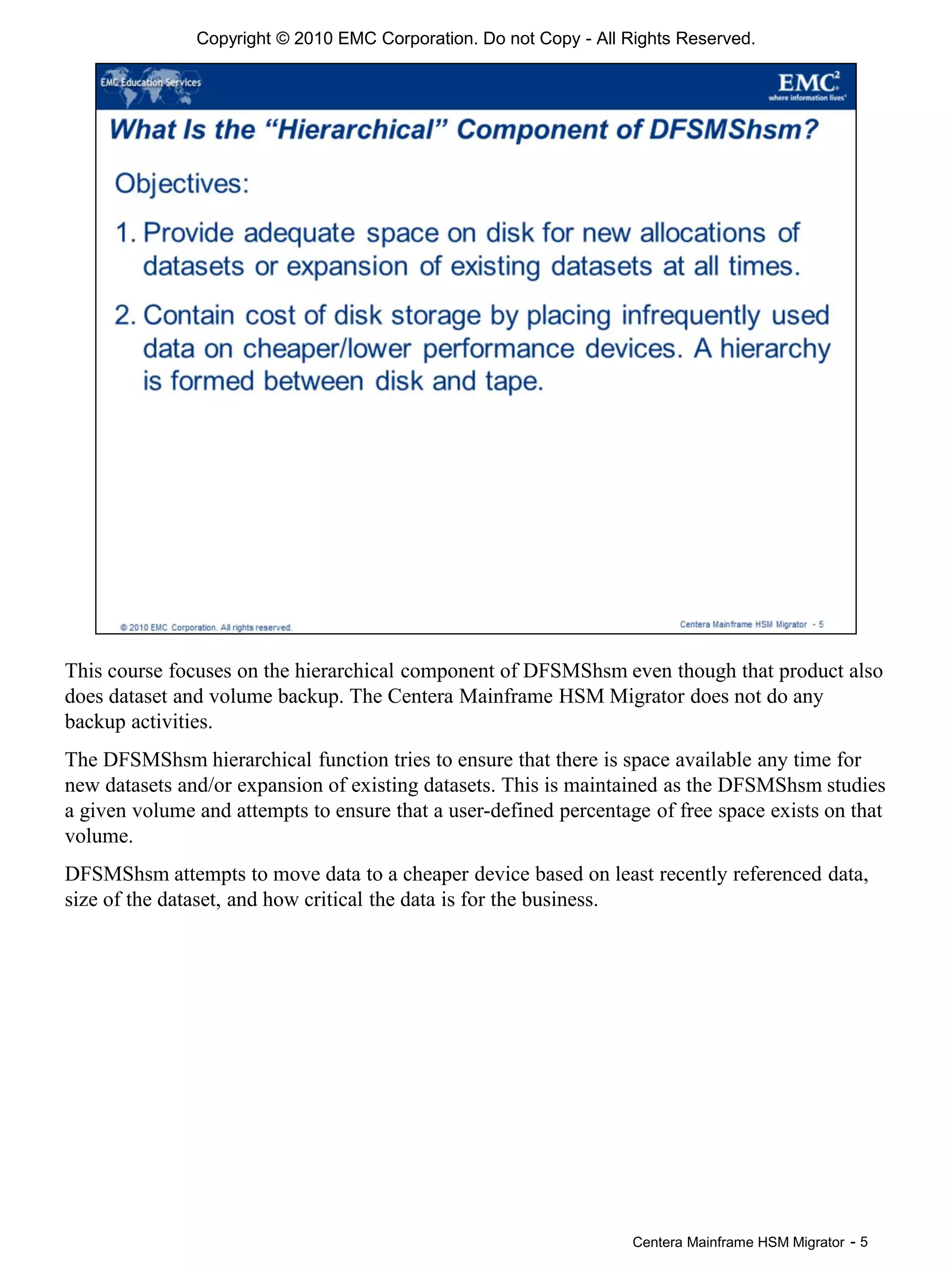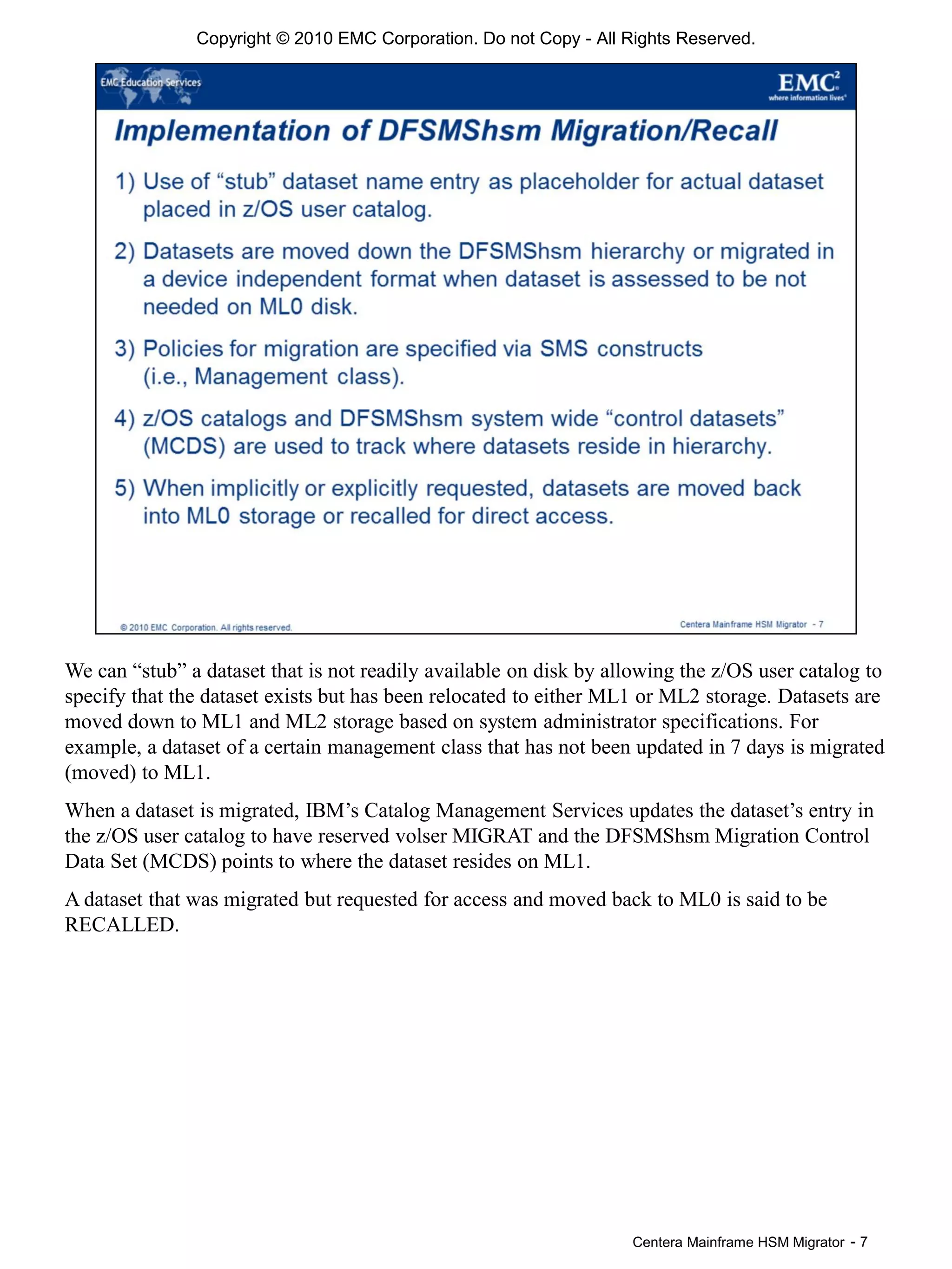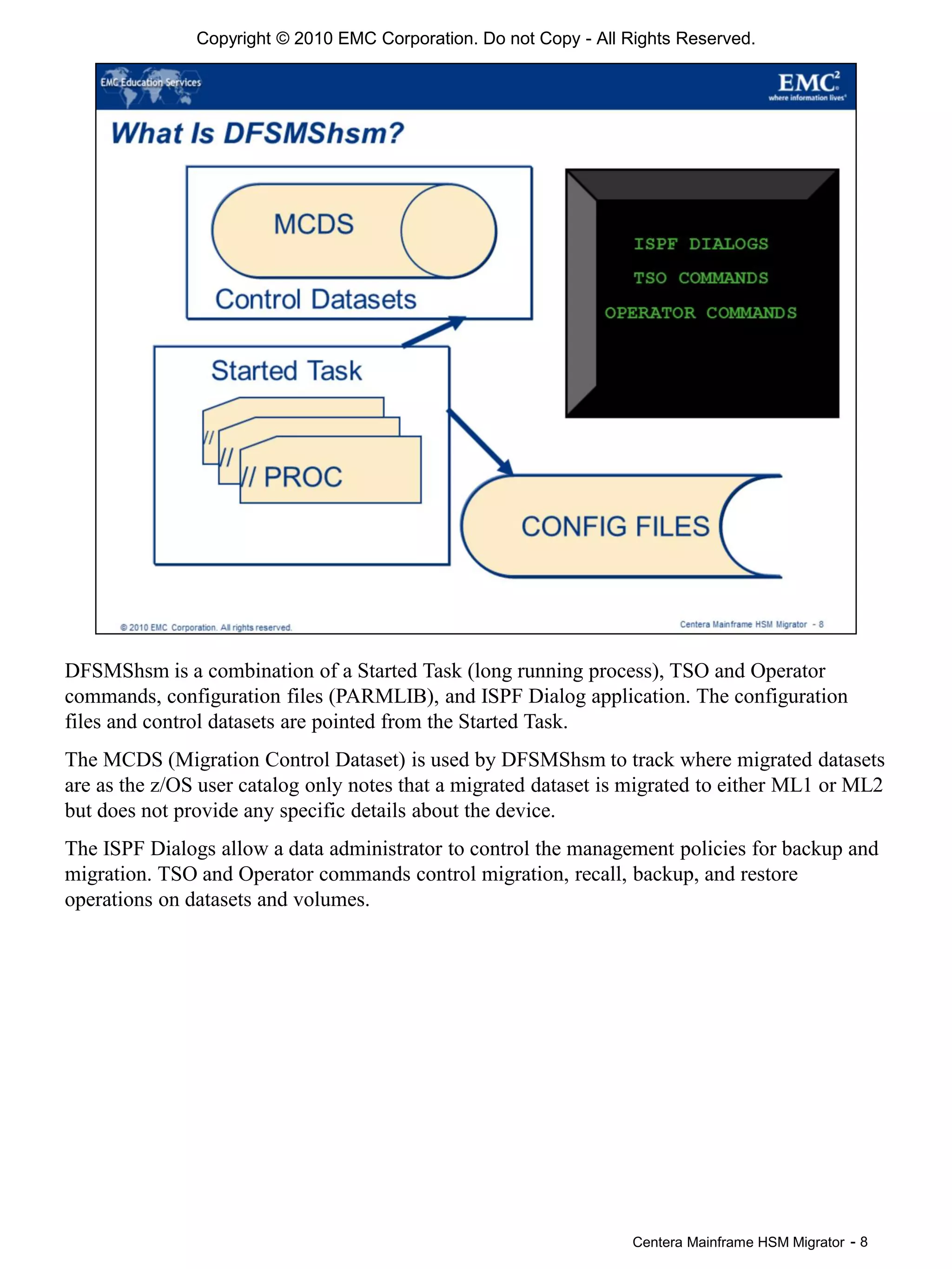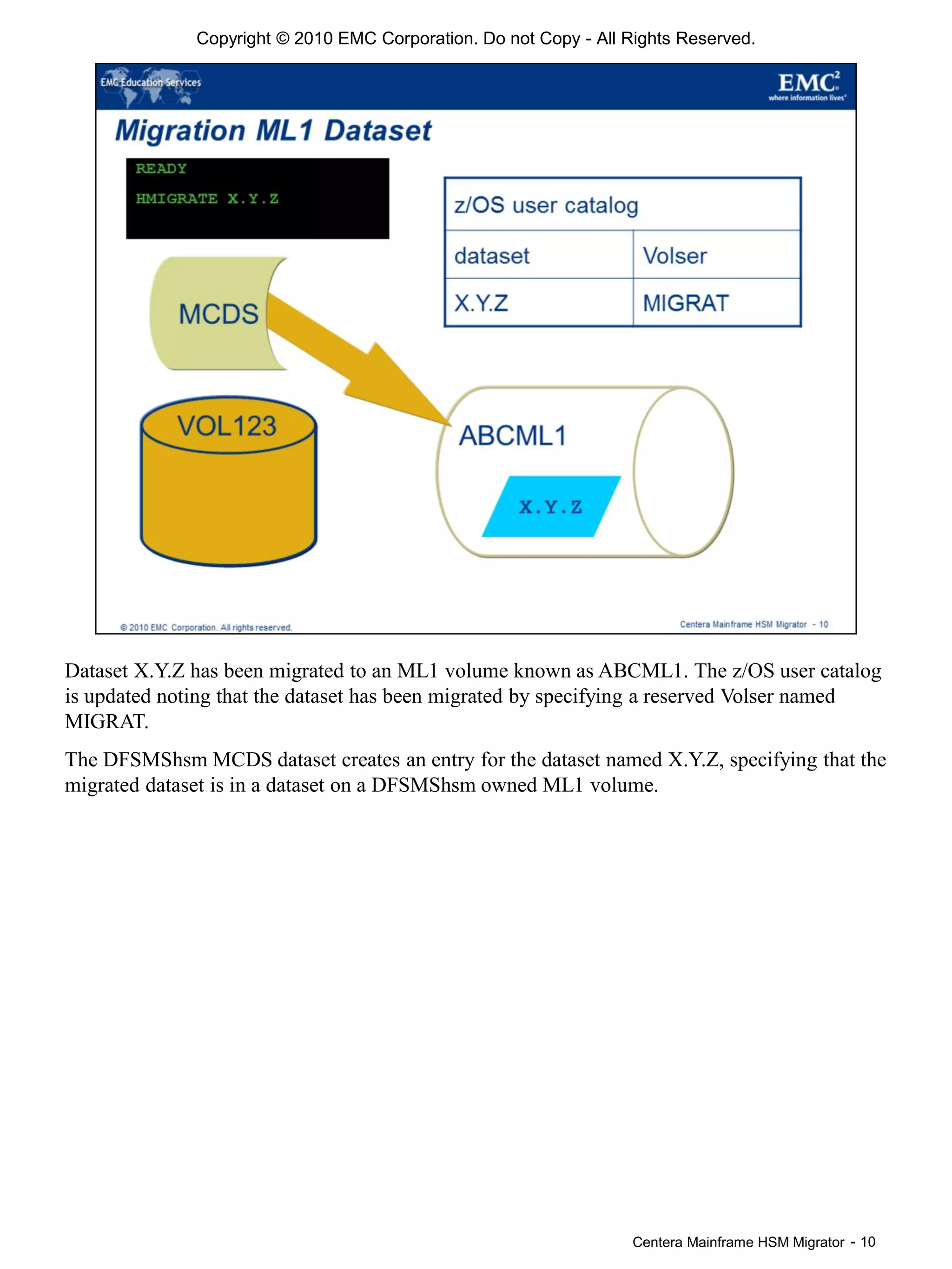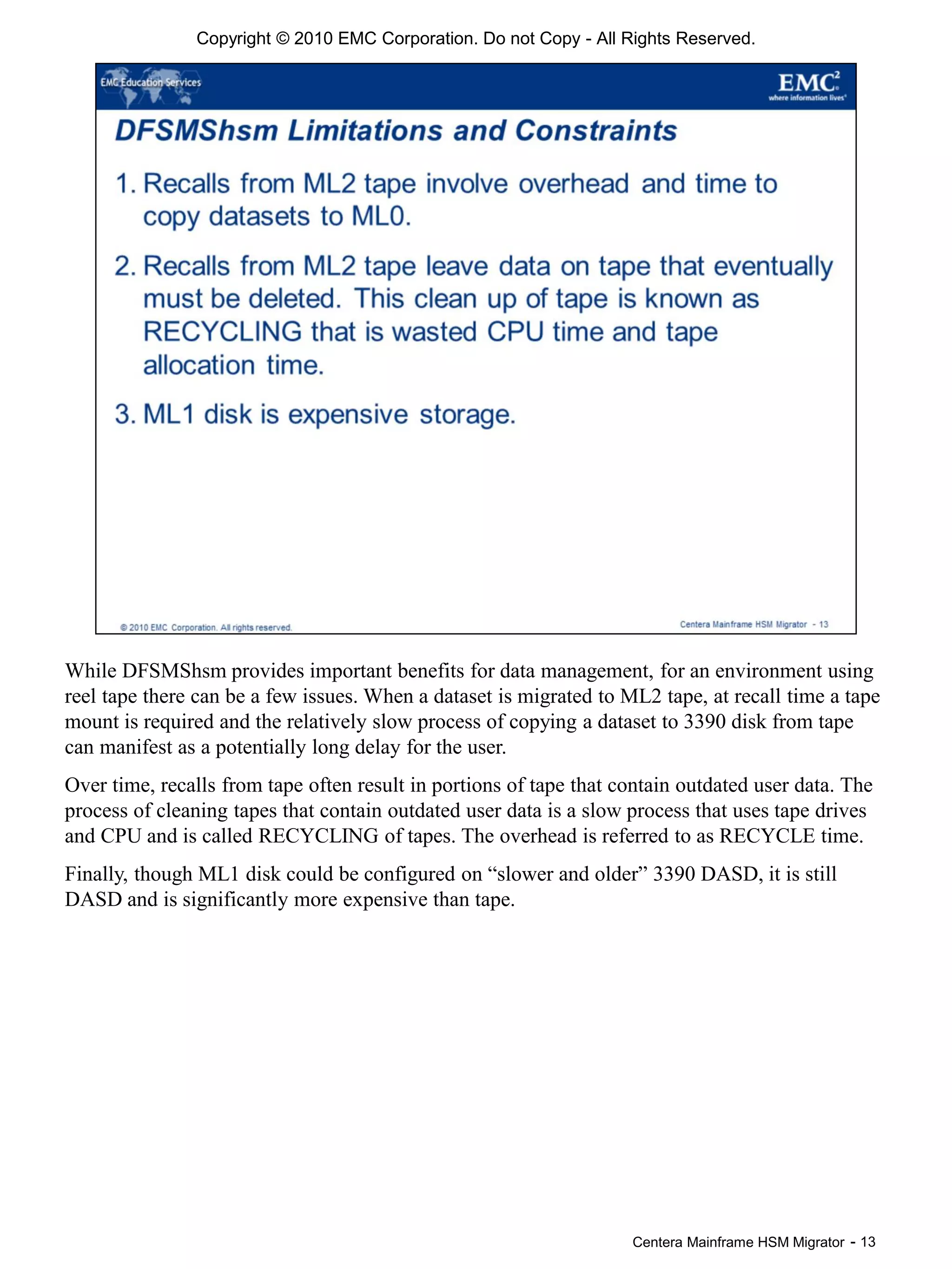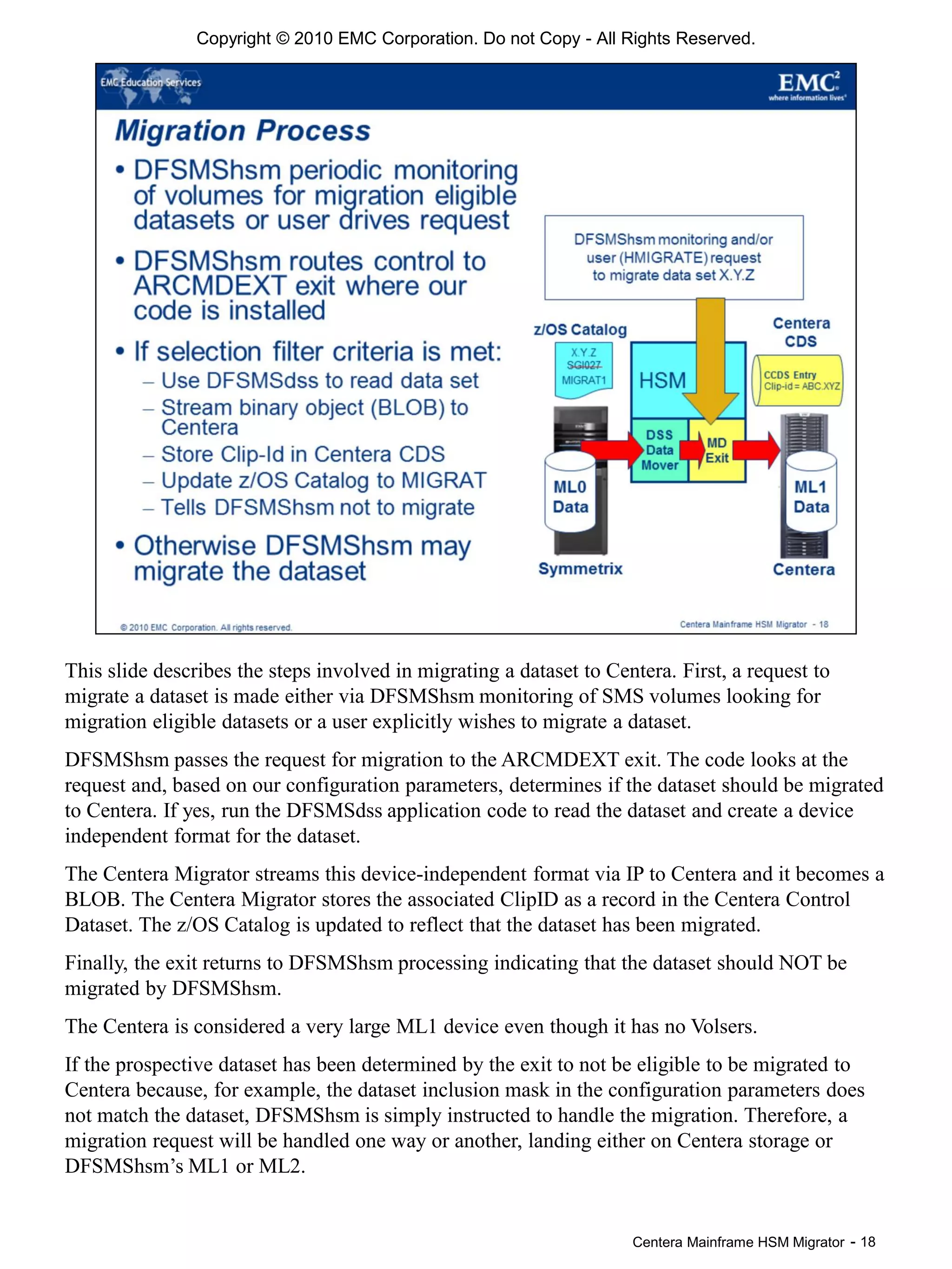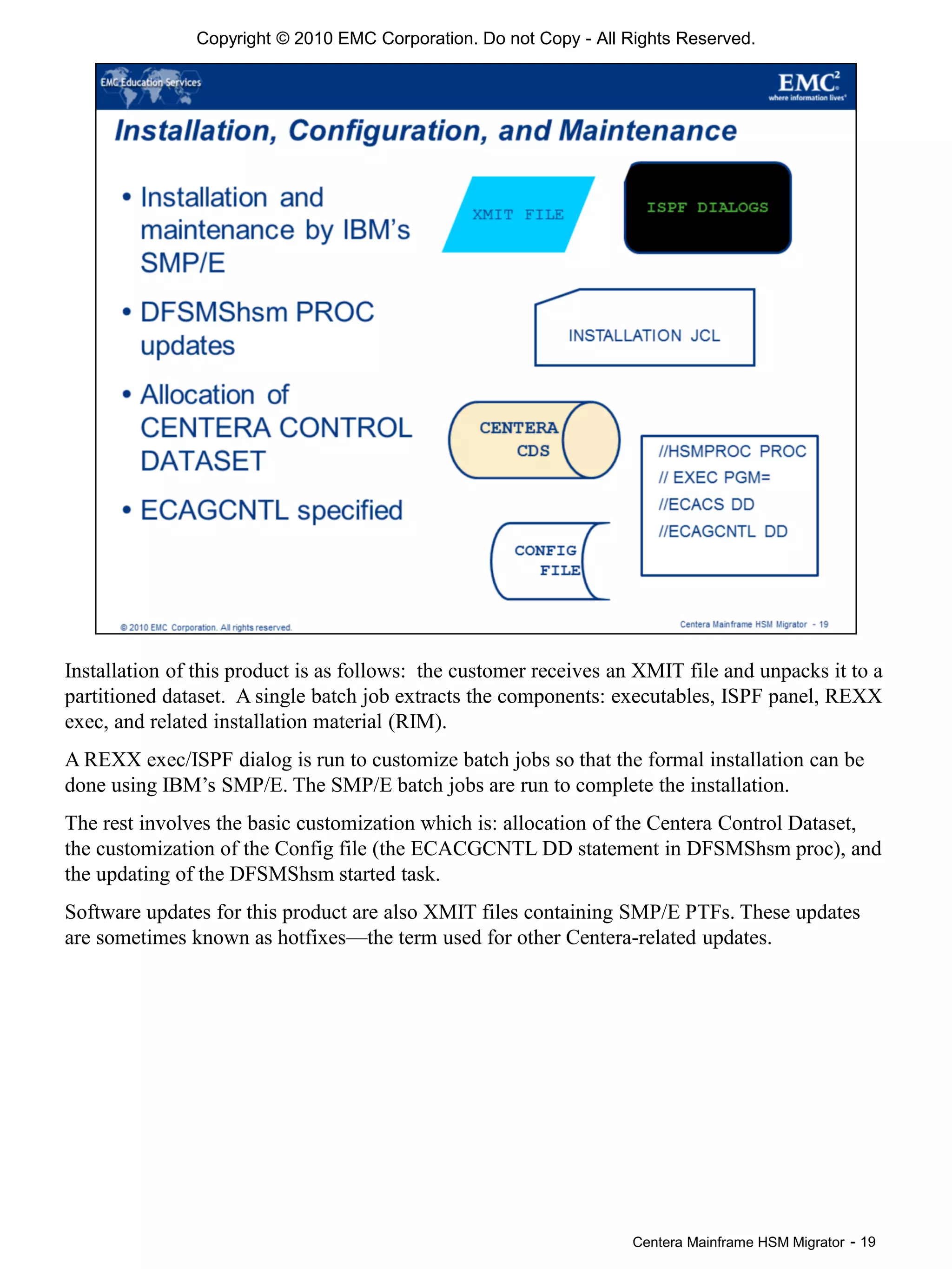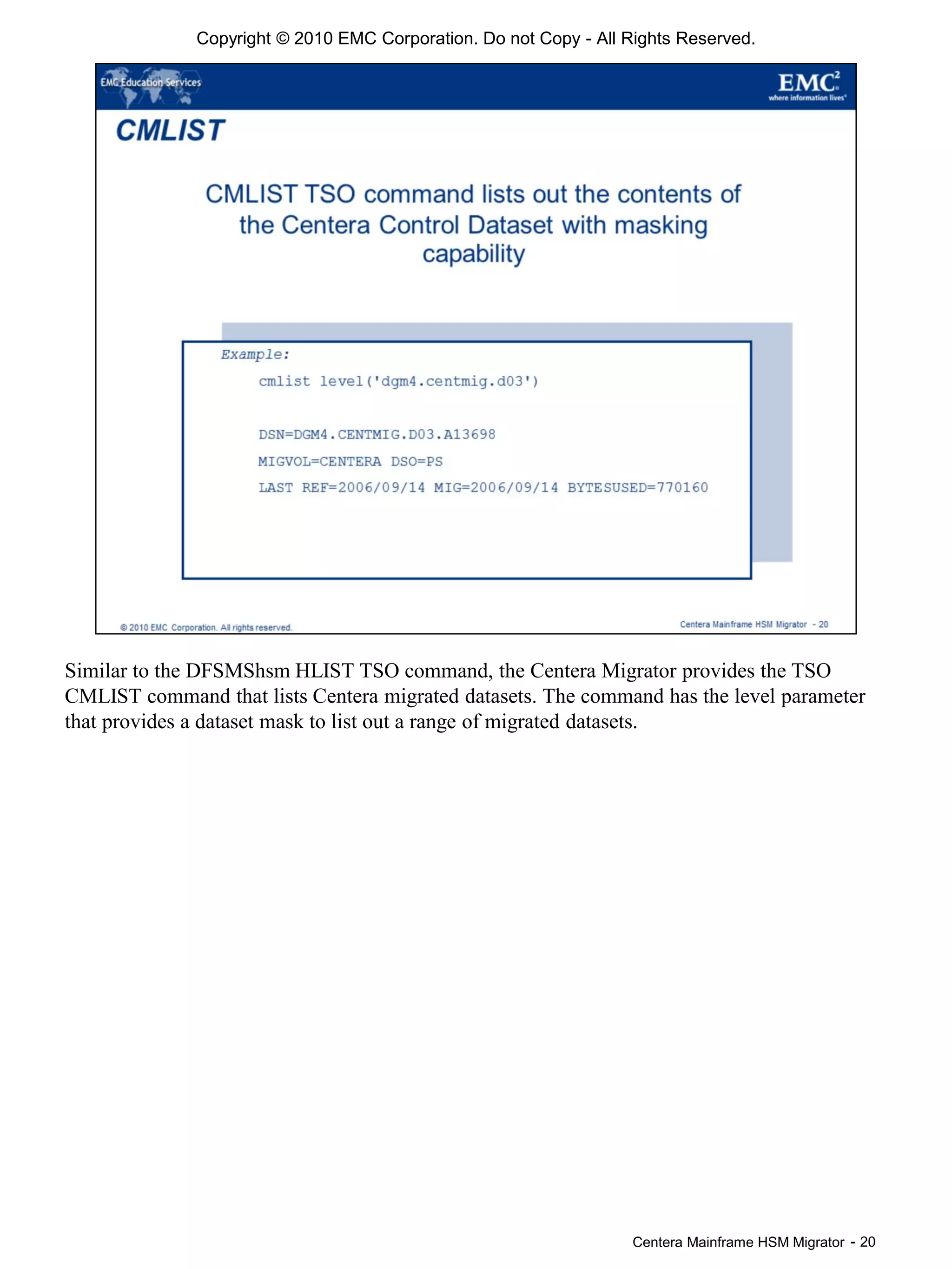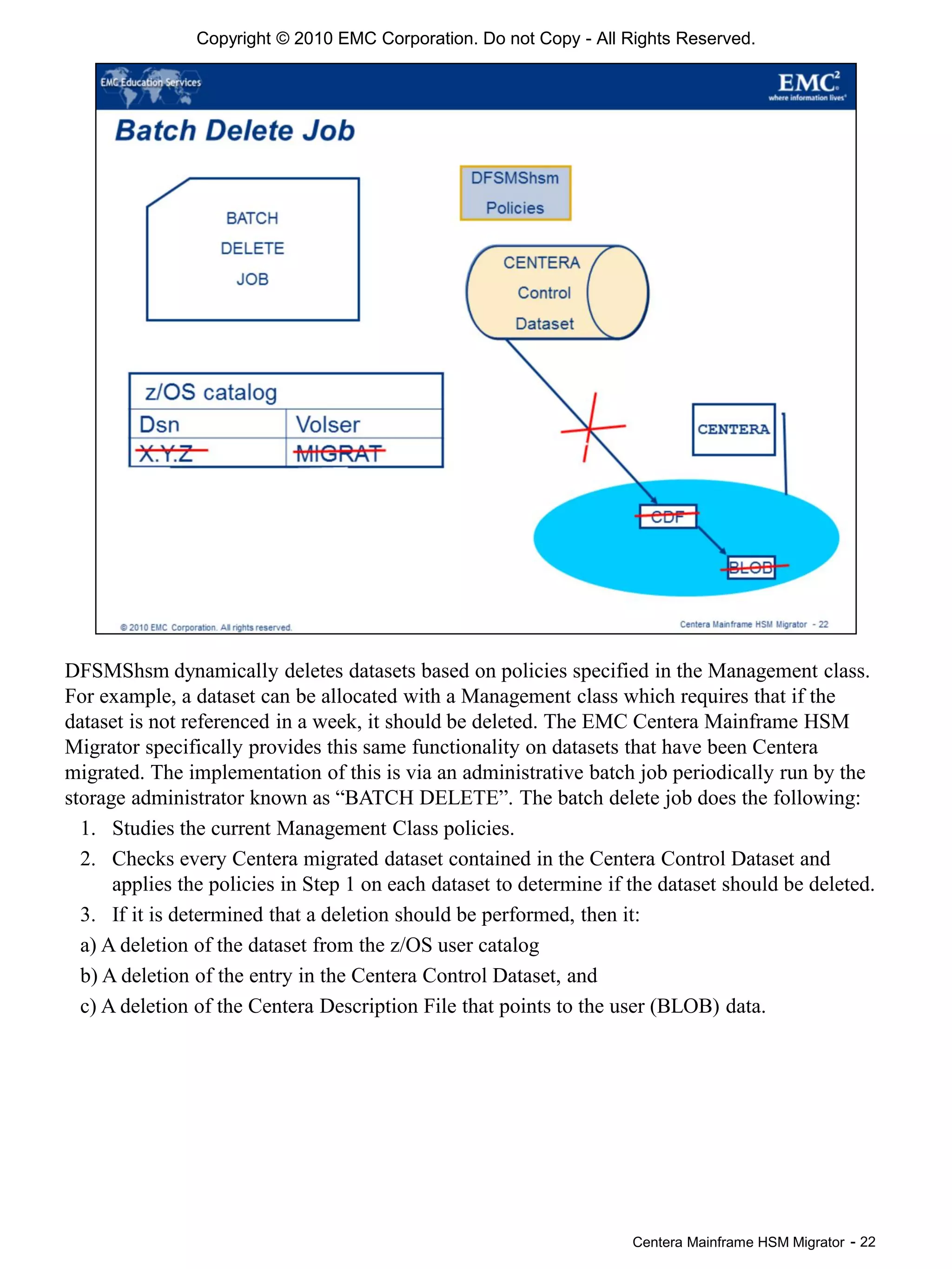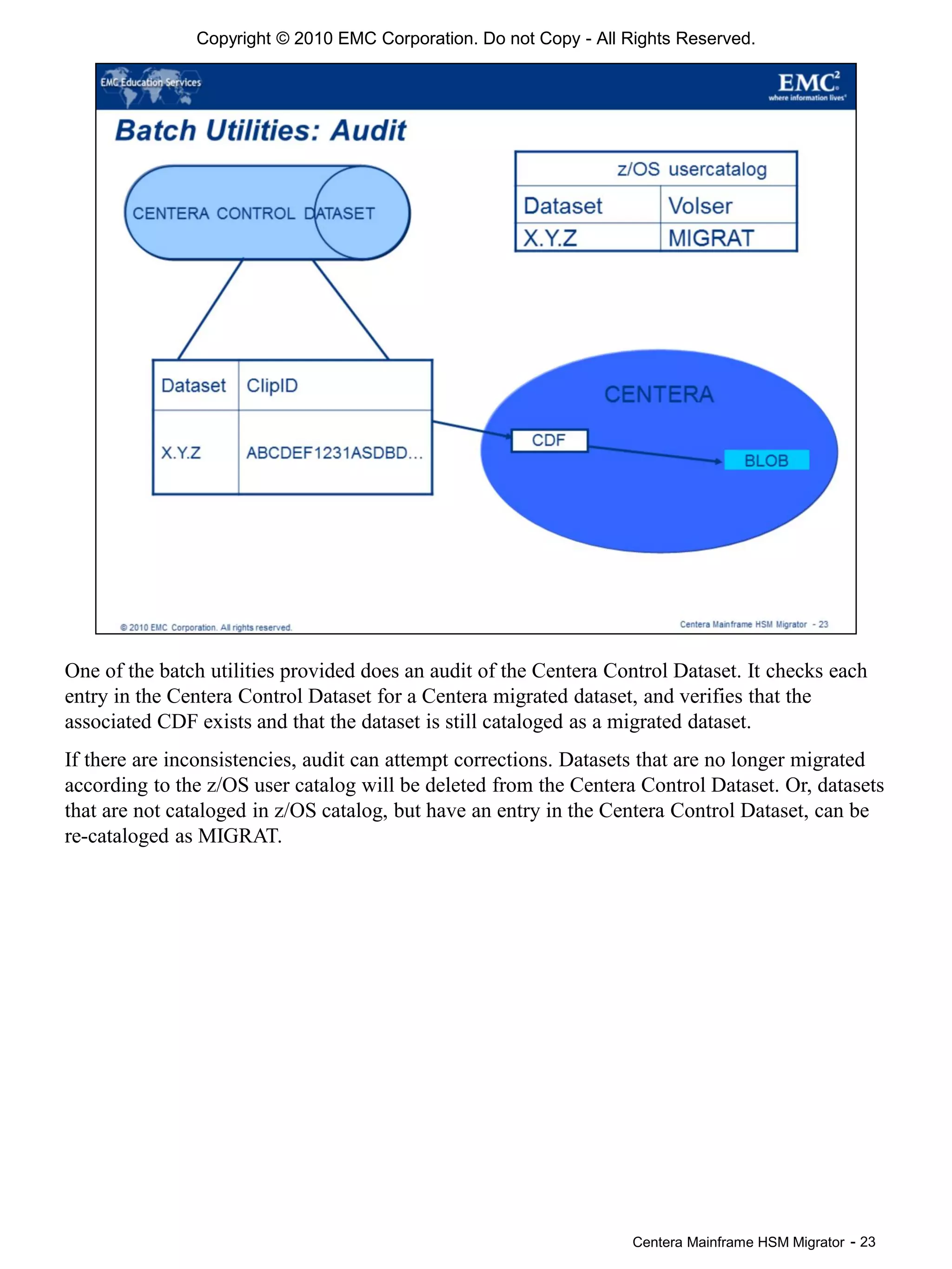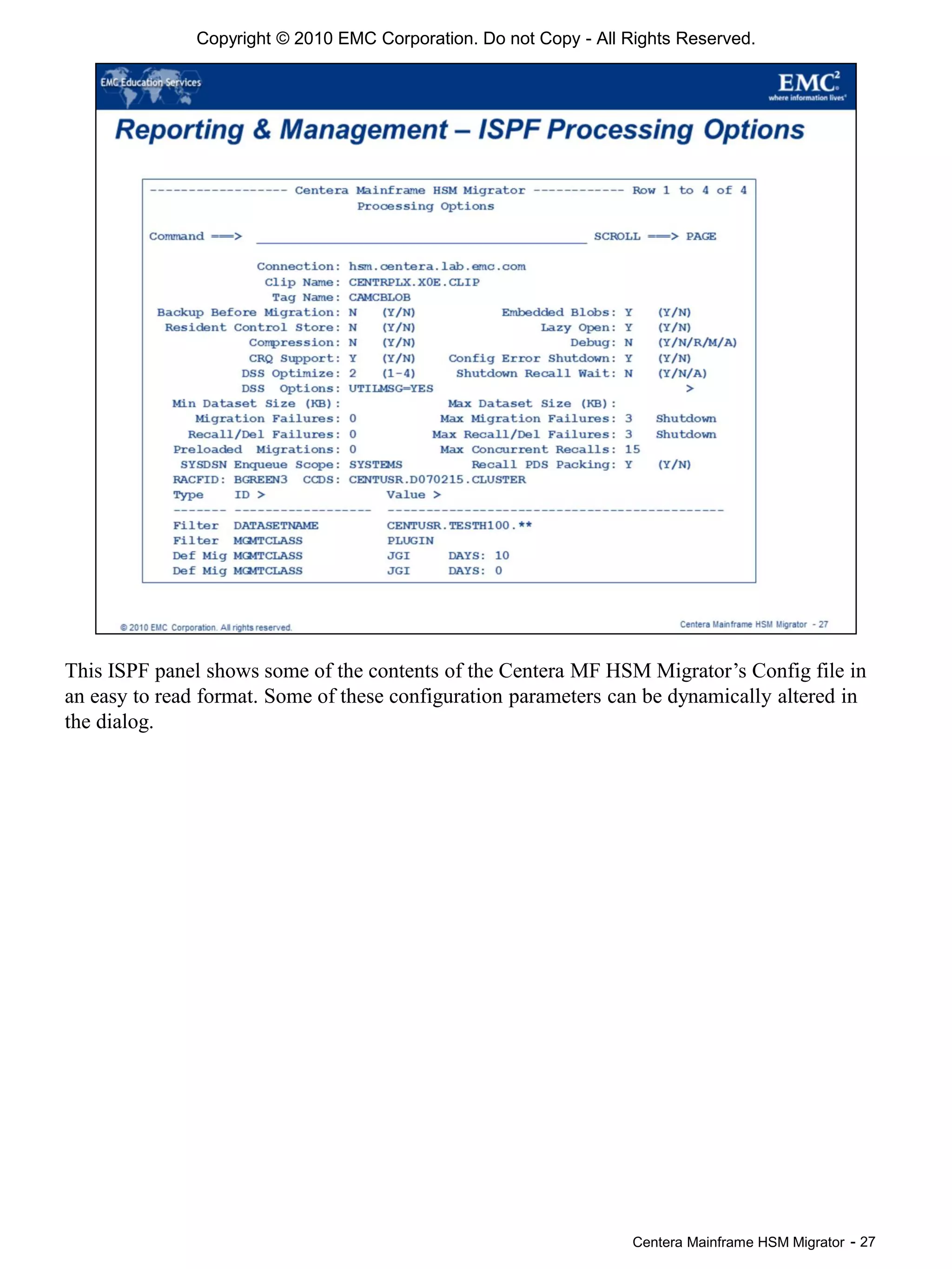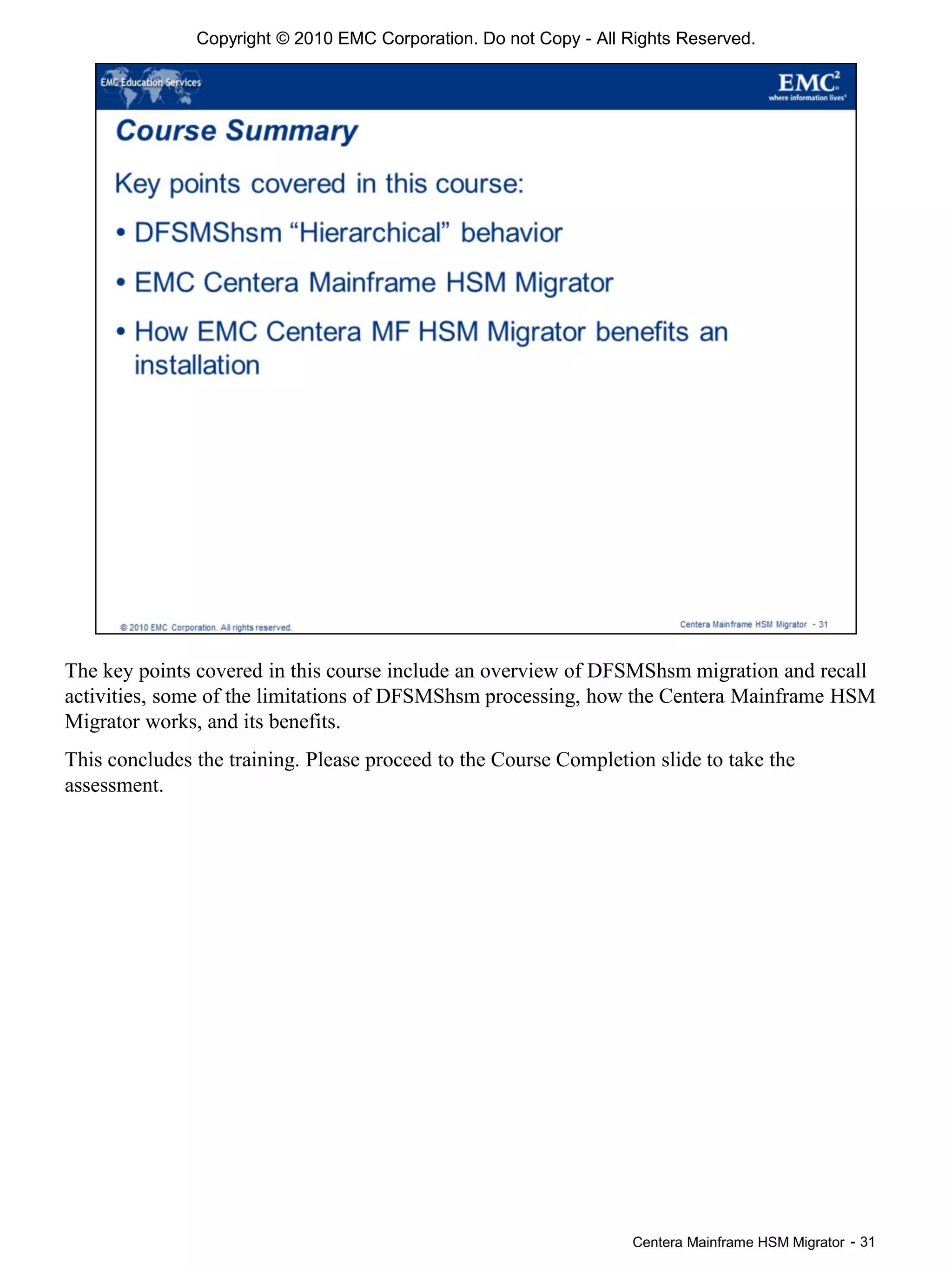The document is about EMC's Centera Mainframe HSM Migrator software. It provides an overview of IBM's DFSMS hierarchical storage management (HSM) system on mainframes and how datasets are migrated between storage levels (ML0, ML1, ML2) over time based on policies. It also describes how the Centera HSM Migrator can be used to migrate datasets from tape-based ML2 storage to EMC's Centera object storage for faster recall performance compared to tape.

